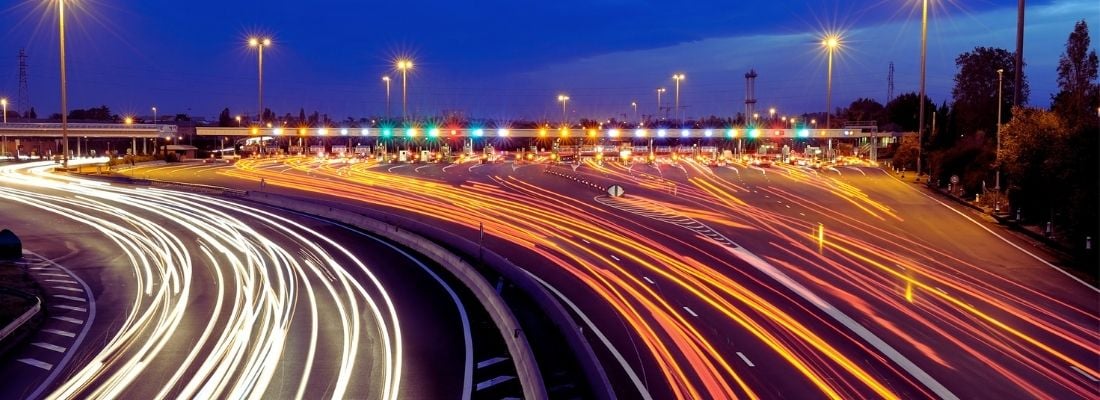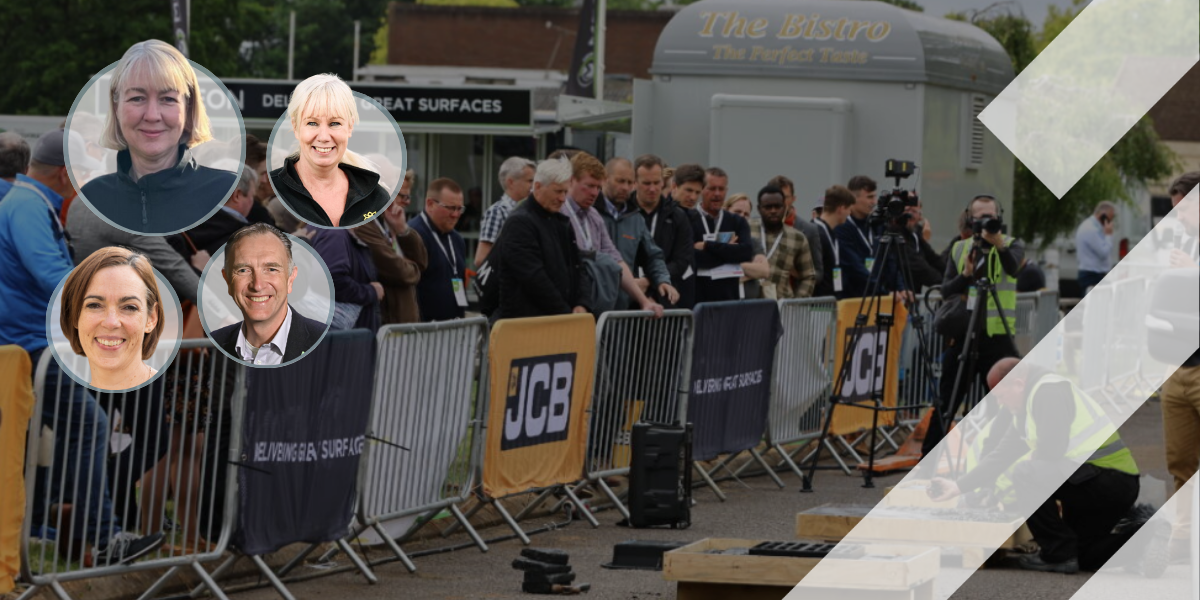Congestion pricing, Tolling or Road User Charging?
The history behind the trend
In the first of a two-part feature, Smart Mobility expert Bob McQueen says that lessons from the past are informing a brighter future for the road user charging and electronic tolling sector.
Road User Charging
“This is a personal view based on extensive experience in the application of advanced transport technology spanning the USA, Europe, the Middle East and Asia-Pacific. I’ve always been an advocate of road user charging, as the whole concept of payment being related to use seems like an equitable solution. There is a range of strategies that can be applied to road user charging making it a rich seam of information for discussion. I find it particularly heartening that the focus is now being placed on the different business models and strategies that we can apply, rather than a fascination with making the technology work.”
“Personally, I think it’s a sign of market maturity that we move beyond a concern about making the technology work, to addressing the challenges and opportunities related to how we can use the technology. This is happening in many aspects of Intelligent Transport Systems including travel information, advanced traffic management and of course electronic payment.”
“Maybe it’s because I’m British, but I have a perception that this really all started in earnest when the Smeed Report was published in 1964. Like many studies of road user charging, that was as far as it went in the UK until congestion charging was introduced in London in February 2003. However, congestion charge implementations in Singapore, Stockholm and Oslo came after the Smeed Report. In fact, Rueben Smeed built on earlier work conducted in the 1920s by Arthur Pigou and by William Vickrey in 1959. These economic thought leaders established the principles that underpin road user charging, with William Vickrey bringing it to life in the US context. While Vickrey may have been ahead of the technology capabilities of the time, it is interesting to note his foresight from the following quote:
“The transponder’s personalized signal would be picked up when the car passed through an intersection, and then relayed to a central computer which would calculate the charge according to the intersection and the time of day and add it to the car’s bill.”
"Smeed built on the general principles from his forerunners and established a set of principles and purposes for Road User Charging that have remained evergreen for many years. These represent a model rather than a recipe.”
Congestion charging: A brief history
The 1964 Smeed Report explored the economic and technical feasibility of implementing a congestion charging programme in the UK. As well as defining the purpose of congestion charging or road pricing as it’s called in the report, operational requirements were identified, and other methods of indirect charging and feasibility of direct charging were explored. The following nine essential operational requirements were identified:
1. The charge should be closely related to the amount of use made of the road
2. It should be possible to vary prices for different roads at various times and for different classes of vehicle
3. Equipment should possess a high degree of reliability
4. The system should be reasonably free from possibility of fraud either deliberately or unintentionally
5. Prices should be stable and readily ascertainable by road users before the trip
6. Payment in advance should be possible
7. The impact on individual road users should be accepted as fair
8. The system should be simple for road users to understand
9. It should be capable of being applied to the whole country and the entire vehicle fleet
“A list of seven desirable operational requirements was also defined and it is interesting that one of the desirable requirements was “the attention of drivers should not be unduly diverted.” I suspect that this would be an essential operational requirement today. Regardless of that, the required operational requirements make a good checklist for road user charging considerations today.”
Smeed Report and Road User Charging today
“The Smeed Report also offers several insights. These include the fact that in the absence of a direct bargaining mechanism, a pricing system must be imposed by an authority. This leads me to an interesting possibility, could eBay be used as a direct bargaining mechanism for road use, or traffic signal green time. Too radical perhaps?”
“Could eBay be used as a direct bargaining mechanism for road use, or traffic signal green time. Perhaps that’s a little too radical…”
“The next insight is that charging can have different effects in various parts of the community leading to wealth redistribution. This indicates that it is especially important to understand the desired outcomes and objectives of any Road User Charging approach.”
“There are other insights, but perhaps one of the significant ones for today’s context is that the effect of the Road User Charging approach is heavily influenced by the way in which revenue is distributed. Should the revenue from Road User Charging be distributed uniformly across the population, or should it be skewed according to the people who will gain from the introduction of the system, and those that might lose? I’m reminded of the work conducted by Donald Shoup, the distinguished Research Professor of Urban Planning, at UCLA, when he proposed implementation of congestion pricing in Los Angeles. He suggested that the distribution of revenue from congestion pricing should take account of “winners” and “losers” with respect to the impact of the pricing strategy.”
“Reviewing the Smeed Report and implementations such as Singapore, London and Stockholm, a few thoughts are stimulated as things that we might want to consider for Road User Charging or Road Pricing today.” “These can probably be expanded in another article, but I will simply list them as a means of provoking further thought and discussion:
1. Could we have the flexibility to choose our own plan for Road User Charging in the way that we can for cable TV? Could we pick one based on individual circumstances and preferences?
2. Are other comparable pricing mechanisms already in use such as those in the electricity sector, cell phone industry and ridesharing market such as Uber and Lyft?
3. Do variable insurance rates have a role to play in congestion pricing?
4. Could the congestion charge be adjusted according to volume and frequency of use as well as location, time, and vehicle classification?
5. Could road user charging be combined into a single pricing package for all modes of transport, with credit offered for “good travel behaviour”?
6. What about turning the psychology on its head and offering people a reward for good behaviour rather than a penalty or payment for bad behaviour? In other words, congestion avoidance rewards? Would private sector loyalty programmes provide a source of funding for the awards?
7. Could we offer a “money back guarantee” to travelers if our intended and stated performance targets are not met?
8. Is there a place for private sector sponsorship of road user charging?
Congestion pricing
"Discussion on these questions would require a whole book, not just an article. I am hoping that the questions will provoke an interactive discussion within the practitioner community.”
“A lot of things have happened since the Smeed Report was published 57 years ago. We have gained considerable practical experience in implementing the principles and the technology has moved on to enable complete support for several different strategies.”
“In the US, considerable experience has been gained in the use of dynamic tolling in the management of express lanes. Although the US approach focuses on paying additional fees for a higher level of service, this contrasts with the European approach where the fee is related to the damage caused all the inconvenience caused the other travelers and the presence of the vehicle. It is also interesting to note that the congestion charge in London is a fee and not a tax, while the charge in Stockholm is classified as a tax.”
Road User Charging: On the up
“There has been a recent upsurge of interest in Road User Charging possibilities in the US. The approach is being considered as a viable alternative to the failing gas tax approach which involves a fixed proportion of the price of a gallon of gasoline. As internal combustion engine vehicles become much more fuel-efficient and the trend toward electric vehicles continues to grow, there is interest in a per mile approach to raising the taxation required to fund the transport system.”
“Learning the lessons from the past and applying them into today’s context doesn’t mean we have to be stuck in the past. However, the knowledge and information from previous experience can inform decisions for the future and in turn lead to a greater vision for transport. It’s easier to move forward in a successful direction through careful consideration of past experiences. I can only say: charge!”
Bob McQueen is founder of Bob McQueen & Associates, based in Perpignan and Orlando.
Share your story
Do you have an innovation, research results or an other interesting topic you would like to share with the professionals in the infrastructure, traffic management, safety, smart mobility and parking industry? The Intertraffic website and social media channels are a great platform to showcase your stories!
Please contact our Sr Brand Marketing Manager Carola Jansen-Young.
Are you an Intertraffic exhibitor?
Make sure you add your latest press releases to your Company Profile in the Exhibitor Portal for free exposure.








